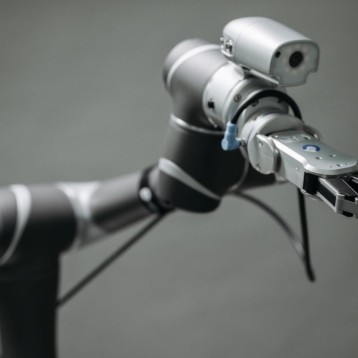Quite a few hardships will face Scarab on its lunar mission; it will have to operate while withstanding extreme temperatures, intermittent communications, as well as maneuver over rough terrain and permanent shadow, as there is perpetual darkness in these areas.
For those reasons, Scarab was designed with a unique transforming chassis which allows it to change its pose according to what needs to be done. When drilling with the onboard 1-meter coring drill, it stabilizes itself by situating its belly on the ground and using the wheels as a steady platform. When driving, its body is situated higher, allowing for extreme mobility and obstacle handling.
In order to cope with the rough terrain, Scarab has highly maneuverable wheels enabling it to climb over obstacles as well as drive sideways on steep slopes. In order for Scarab to work and navigate in complete darkness, it will use active laser sensing that will allow it to see the terrain in the dark. In addition, Scarab will use a radio-isotopic power source which generates heat and from that produces electricity. This power source produces very low power (about a hundred watts – comparable to one household light bulb), meaning that the robot will move very slowly.
The Lunar Rover Initiative is currently working to improve and refine Scarab’s design. The next step is field testing it in another type of rough terrain – a volcano in Hawaii.
TFOT recently covered a new concept for a lunar truck, called the Crew Mobility Chassis. The main feature of this new manned vehicle is its high mobility resulting from the use of six sets of dual wheels. This arrangement allows the vehicle to maneuver more easily than previous lunar vehicles. TFOT also covered ATHLETE (All-Terrain Hex-Legged Extra-Terrestrial Explorer) – a robotic six-legged vehicle capable of traversing moderate, fairly hard terrains and soft, extreme terrains. In a decade or so, if all goes according to plan, NASA will fly ATHLETE to the Moon.
More information about Scarab is available at the project’s homepage.










